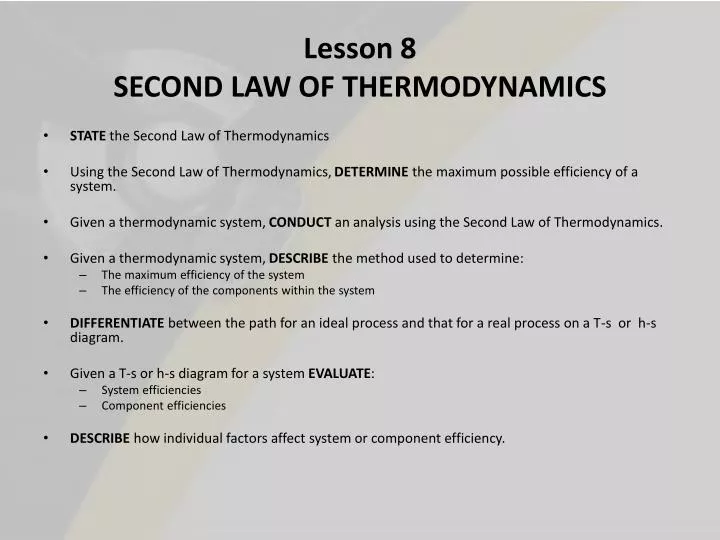

a chemical equation that includes the enthalpy change. However, chemists have cleverly defined the enthalpy change of a reaction so that it incorporates the work term, so we don't have to worry about it separately. In the ΔE equation above, we see that there are two terms we might need to measure: the heat q and the work w. The first law of thermodynamics deals with the total amount of energy in the universe.

Thermodynamics definition, the science concerned with the relations between heat and mechanical energy or work, and the conversion of one into the other: modern thermodynamics deals with the properties of systems for the description of which temperature is a necessary coordinate. The First Law of Thermodynamics is really a prelude to the second. heat engine that converts heat completely to work, that is, an engine with 100% thermalefficiency. IIElectromagnetism&Thermal Physics 3 The first law of thermodynamics gives the quantiative relations between the internal energy of a system and the quantities of heat and work that the system. The enthalpy changes for these reactions are easily measured. In other words, the work done for each complete cycle is just the difference between the heat Q1 absorbed by the engine at a high temperature and the heat Q2 exhausted at a lower temperature. In a closed system, such as the universe, this energy is not consumed but transformed from one form to another.


 0 kommentar(er)
0 kommentar(er)
